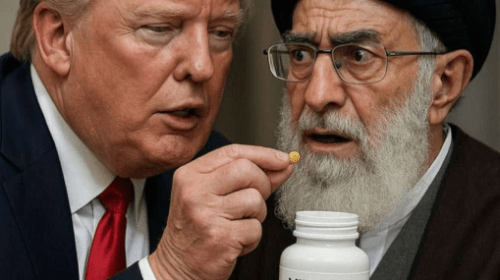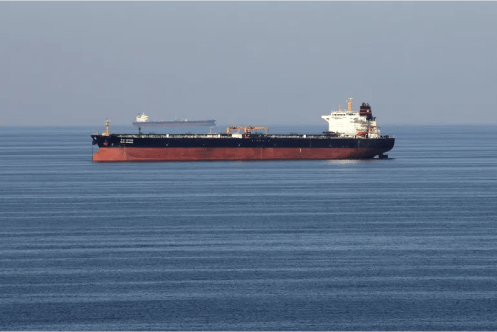The real reason for the war with Iran has nothing to do with uranium enrichment – it’s about a very different kind of enrichment…
They keep telling us this war is about Iran’s nuclear ambitions. But if you’ve been paying attention, you know that’s just the cover story.
This war isn’t about bombs. It’s about banks.
Iran is one of the last sovereign nations that hasn’t been absorbed into the Western-led financial system. It has its own central bank, it doesn’t bow to the IMF or World Bank, it doesn’t allow full-spectrum financial penetration from the likes of BlackRock, Vanguard, or JPMorgan. That makes it a problem for the globalist banksters.
Unlike other nations that folded into the “rules-based” system post-9/11 or after the Arab Spring, Iran never gave up full control of its monetary policy, energy sector, or capital markets. It’s one of the few remaining holdouts from the era before neoliberal globalization became gospel.
That’s the real threat.
Because the kind of capitalism that dominates today doesn’t just want trade deals—it wants total access. To your energy, to your debt, to your labor markets, to your political decisions. It’s about total control. And Iran refuses to be brought into that fold.
Iran doesn’t take marching orders from the IMF. It sells oil outside the dollar system. It talks openly about a multipolar world and backs up its talk with regional alliances, from Iraq to Syria to Lebanon.
This is what Washington, London, and Tel Aviv can’t tolerate—not because Iran is strong militarily, but because it’s economically disobedient.
The “nuclear threat” narrative is just the propaganda vehicle. It’s the same one they used in Iraq.
The goal is to justify dismantling a regime that won’t play ball with the bankers.
And this isn’t new. Every major military campaign of the past two decades—Libya, Iraq, even Ukraine in a different way—follows the same pattern: identify a state resisting global financial integration, frame it as a rogue actor, and bring it to heel through war, sanctions, or regime change.
Iran is just the next target.
So when you see the headlines, remember: this isn’t just about nukes. It’s about a country that won’t open its books, privatize its oil, or let Wall Street set its future. And for the controllers of the world, that kind of independence is the real weapon of mass destruction.
The globalists are persistent but not creative, they’ve been using the same playscript every time:
The first strike doesn’t come from fighter jets, it comes from central banks, sanctions, and financial isolation. The goal is to break a country’s sovereignty without firing a shot. Military action is just the final act. But the war starts in suits and spreadsheets.
Iran’s been under this kind of siege for decades. Sanctions, asset freezes, dollar blacklisting; it’s all part of the same routine. Cut the country off from SWIFT, kill its access to global credit, and then wait for inflation, unrest, and collapse. All dressed up in the language of “human rights” and “nonproliferation.”
When that doesn’t work, when a country like Iran refuses to fold, then the gloves come off.
What makes Iran so dangerous, from the perspective of the world’s power masters is that it learned how to survive this playbook. It built workarounds with China, Russia, and regional allies. It created internal resilience. It even managed to sell oil off-grid. It didn’t fold, and that defiance can’t be tolerated because if Iran can resist and survive, others might try too.
Iran is dangerous not because of its weapons, but because of its disobedience. It doesn’t answer to the IMF. It keeps its central bank independent. It trades oil without using dollars. It has survived decades of pressure without capitulating and that terrifies the financial elite.
And that’s the real threat.
Just like in Iraq, Libya, and Syria, the financial war is phase one. The military war is phase two. The taking over the country through ‘reconstruction’ contracts and privatization deals is the endgame.
So don’t be fooled by the headlines about uranium and security. What’s really being targeted is independence—economic, political, and national. And the people doing it don’t wear uniforms. They wear suits, and they control the system from above.
The final phase of war is always dressed up as “rebuilding.” But what they really mean is looting.
Once a nation is bombed into submission—financially, militarily, or both—the suits return, not with tanks, but with contracts, debt packages, and asset seizures.
We’ve seen it before:
Iraq was turned into a free-market lab experiment after the U.S. invasion. Paul Bremer’s CPA (Coalition Provisional Authority) issued orders to privatize state assets, deregulate foreign ownership, and open the oil sector to Western firms. The country was still burning, but ExxonMobil, Halliburton, and Bechtel were already cashing in. Iraq didn’t get rebuilt—it got carved up.
Libya was handed over to IMF-backed “technocrats” after Gaddafi was taken out. State-run banks were broken up, oil contracts re-written, and foreign capital flooded in. The country collapsed into chaos, but from a financial point of view, it was open for business.
And now, Ukraine. While the war still rages, BlackRock has already signed agreements to help “manage reconstruction”—a sanitized way of saying they’ll oversee the selling-off of what’s left. Farmland, infrastructure, energy grids—all on the table for foreign investors. It’s shock doctrine 101: destroy, destabilize, and then privatize.
This is the model. It’s not about war and peace. It’s about resetting the ownership structure of a country. Turning a resistant nation into a compliant, debt-dependent market.
Iran is the next prize.
If the pressure campaign succeeds—if sanctions, war, or internal collapse bring the government down—you’ll see the same vultures descend. The country will be restructured from the top down: oil opened up, central bank “modernized,” state industries sold off to foreign bidders, all under the banner of “reform.”
And who benefits? Not the Iranian people. Not the region. But the same global firms and institutions that helped design the collapse in the first place.
That’s why Iran is being targeted. Not because it’s a military threat, but because it’s not yet owned.







